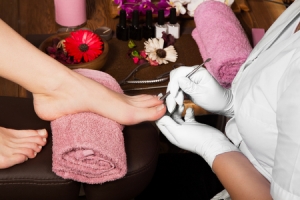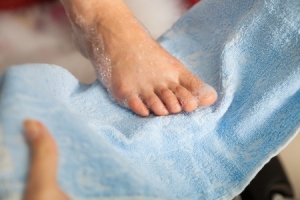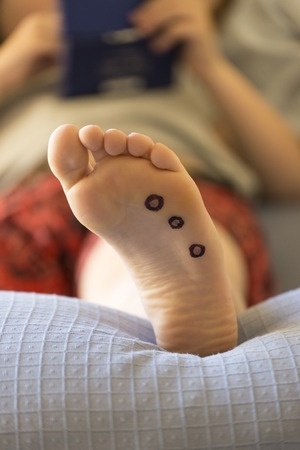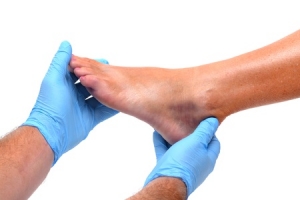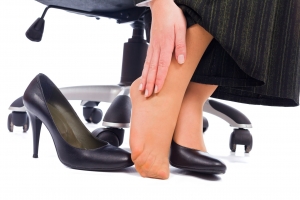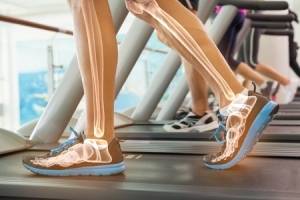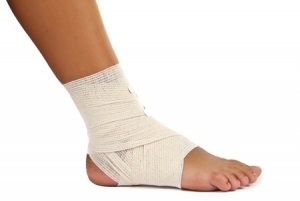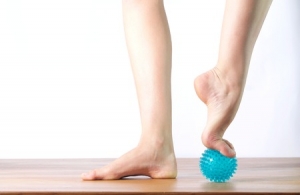Connect With Us
Blogs
Show Some Gratitude for Your Feet
It’s the season of Thanksgiving and here at Superior Foot & Ankle Care Center we think your feet deserve to be on the list of things that you’re thankful for! The 26 bones, 33 joints, 107 ligaments and 19 muscles in each of your feet work together in complex and amazing ways to enable you to do all the activities you enjoy. Why not show your feet some gratitude with one or more of these proactive podiatric health ideas:
Pay attention: Many times your feet are the starting place of diseases that affect your entire body such as diabetes, arthritis, circulatory and nerve problems. Get in the habit of inspecting your feet regularly and report any unusual changes to the foot doctor. Even more minor problems—ingrown toenails, warts, athlete’s foot—are more easily treated when caught in their earliest stages.
Do a shoe review: Are your shoes hurting your feet? Check to see that the shoes you wear have adequate arch and ankle support as well as cushioning for the sole. This will go a long way to preventing foot injuries and chronic conditions. Look for signs of wear and don’t continue to use shoes that are stretched out or have tears or loose stitching.
Have a spa day: pamper your feet with a relaxing foot soak. Then carefully trim toenails (straight across and not too short to avoid ingrown nails). Finish with a rich moisturizer massaged into your feet. If you prefer a salon pedicure just be sure to choose a place that follows proper sanitizing procedures for foot baths and tools to prevent fungal infections.
Watch your weight: being overweight puts excess strain and pressure on your feet and is a contributing factor in many foot problems. Maintaining a healthy weight will help reduce foot pain.
Get a checkup: When’s the last time you were in to our Long Beach office? Make an appointment by calling 562-420-9800 and let our podiatrists, Dr. Victoria Foley and Dr. Constance Omelas examine your feet. The foot doctor can alert you to any potential problems and make recommendations for ways that you can help keep your feet healthy.
Quit Smoking: 8 Ways to Fight Cravings
November is the month of the Great American Smokeout and here at Superior Foot & Ankle Care Center we want to alert patients to the fact the quitting smoking can improve foot health. While most people are aware that stopping smoking will greatly reduce the risk of cancer and heart disease, they may not realize the role that smoking plays in other aspects of their health, including their feet.
When you smoke, your blood vessels constrict and your circulation is reduced. Quitting will bring the following benefits:
- Faster healing of foot infections and injuries
- Reduced down time after podiatric surgeries
- Decreased risk of complications accompanying other diseases that affect the feet such as diabetes
- Lower risk of developing peripheral artery disease
Most people who resolve to quit will hit points where the physical or mental craving for a cigarette can be intense. Here are some suggestions from the American Cancer Society on how to tame cravings:
- At least in the beginning avoid being in places where people are smoking. Spend as much of your free time as possible in public places where smoking is prohibited—movie theaters, libraries, malls, church, restaurants and museums.
- Take good care of yourself. Get enough sleep, eat a well balanced diet and drink plenty of water.
- Cut yourself some slack. Smoking is an addiction and it’s natural to feel irritable, depressed, angry or other negative emotions. Plan ahead to have ways to deal with the stress: exercise, a hot bath or shower, positive imaging and mediation.
- Switch from 1 or 2 big meals a day to 4 to 6 small ones. This will help keep your blood sugar up, your energy level balanced and reduce the urge to smoke.
- If you miss the physical aspects of having a cigarette keep oral substitutes handy such as lollipops, carrot or celery sticks or hard candy. Have a pencil, smooth stone or paper clip at the ready to hold in your hand.
- Keep a photo of those you love with you at all times. Look at it when you are tempted to smoke to remind yourself of why you want to reduce your risk of cancer, heart disease and other health problems associated with smoking.
- Phone a friend or a smoking cessation hot line when you need extra support or someone to talk to as you battle.
- Celebrate milestones—one day, one week, one month—that you go without a cigarette.
Quitting smoking isn’t easy but the benefits to your feet (and the rest of your body) are well worth it. If you have questions about other conditions that affect your feet, contact our podiatrists, Dr. Victoria Foley and Dr. Constance Omelas at our Long Beach office by calling: 562-420-9800.
Diabetes: Making Positive Choices
At Superior Foot & Ankle Care Center we know that diabetes doesn’t have to prevent you from living a full and active life. We treat many patients with this disease and we know it can have a big impact on the health of your feet. Diabetes impedes the circulatory and immune systems increasing the likelihood of infections and decreasing the body’s ability to heal. To make matters worse, neuropathy, a condition also commonly associated with diabetes, makes it difficult to perceive sensations like pain or heat which would signal a potential wound. The good news is there’s much you can do to protect your feet. In recognition of National Diabetes Awareness Month we’d like to focus on some particularly important areas:
Foot Care—Your feet can be both a recipient and an early warning system with regard to problems with diabetes. For that reason, inspecting your feet on a daily basis is essential. Changes in skin or nails, lumps, swelling, bruises, redness, blisters can all signal a potential problem developing. It’s critical that one of our foot doctors, Dr. Victoria Foley or Dr. Constance Omelas be informed of any unusual changes immediately. A good care regimen can also help decrease the risk of foot problems in diabetic patients. Wash feet with a mild soap in warm—not hot—water and dry completely, especially between your toes.
Shoes—Although well-made, properly fitted shoes can help reduce the risk of foot disorders in all patients, those with diabetes have specific concerns to address. Look for shoes that are well cushioned to reduce impact to the soles of your feet. Shoes should be laced and fit snugly (but not tight) to provide stability and limit side to side movement of the foot. If you have a toe deformity such as a bunion or hammertoe, special padding may be prescribed to prevent rubbing and friction which could lead to a corn or callus. Be sure the front of the shoe is roomy to prevent toes from being squeezed together.
Keep Feet Dry—Damp feet can lead to a fungal infection. If you tend to sweat profusely you can use a foot powder or even antiperspirant on the soles of your feet to reduce wetness. Change socks whenever you notice they are damp.
Healthy Lifestyle—Follow your doctor’s instructions for controlling your diabetes. Don’t smoke (it will further impede your circulation). Eat a healthy diet that is high in protein, vegetables and whole grains and limits saturated and trans fats and sugars. Exercise regularly for good joint health and weight control.
If you have additional questions about foot health and diabetes, contact our Long Beach office by calling: 562-420-9800.
The Truth About Warts
Frequently patients will come to us at Superior Foot & Ankle Center to treat warts. What we find interesting is the amount of misinformation and misconceptions out there about this common condition. Below are some myths about warts:
MYTH: Warts only occur in people with poor hygiene.
FACT: Warts are caused by a virus that penetrates your skin and then forms the telltale fleshy bump. They do not result from lack of cleanliness in the patient but rather that the patient walked on a surface where the virus was present. Viruses thrive in moist, warm environments such as showers at the gym or the community pool. For this reason, it is recommended that patients wear flip flops or rubber shower shoes when walking around in these types of public places.
MYTH: You can’t catch a wart from another person.
FACT: Warts are actually quite contagious. They can spread from person to person and also to other parts of your own body. All you have to do is scratch a wart and then touch another place on your body and the virus spreads. If someone in your family has a wart on their foot you should take extra care cleaning the shower and never share towels, shoes, socks, nail clippers, emery boards or any other items that touch another person’s foot.
MYTH: You can get rid of warts with wart removers you find at the drug store.
FACT: While over-the-counter products do exist for removing warts they can damage surrounding healthy tissue and may be unsuccessful in eliminating warts. Warts can be very stubborn to remove and can sometimes recur after they appear to be completely gone. It’s best to let one of our podiatrists, Dr. Victoria Foley and Dr. Constance Omelas care for your wart. The foot doctor will be able to identify the type of wart and prescribe the proper treatment to safely remove it.
MYTH: Warts don’t really do any harm so you don’t have to remove them if you don’t want to.
FACT: While it’s true that warts are not generally dangerous or harmful, they can cause pain and discomfort, particularly if they develop on the heel or ball of your foot. Since they are also contagious, it’s best to get them removed as soon as possible. Left untreated warts can also grow in size and multiply on your foot.
If you have a wart, contact our Long Beach office for an appointment by calling: 562-420-9800.
6 Signs You Need to Call the Foot Doctor
At Superior Foot & Ankle Center we find that many patients do not fully realize the role the podiatrist can play in your foot and overall health. Our purpose is to provide acute and preventive care to your entire lower extremity (from the tips of your toes up to your knees). We have a wealth of treatment options available including pain relief, multiple therapies, custom orthotics, exercise and surgery to correct and improve foot discomfort associated with both age and activities, including sports injuries. In addition, in many cases the foot doctor is able to diagnose a larger, systemic issue from symptoms in your feet and can then collaborate with other health care professionals to care for the disorder.
Use the following as a guideline if you’re trying to decide if you should call the podiatrist:
- You experience sudden or increasing pain; chronic pain seems to be getting more severe or more frequent
- You notice abnormalities in your feet: swelling, changes in shape or size, bruising, lumps,
- Other non-painful symptoms: tingling, burning, itching, pins and needles, numbness
- Changes in skin (color, redness, scaling, flaking, sores, blisters, cracking) or toenails (discoloration, thickening, crumbling, peeling)
- Possible signs of infection: pus or discharge, redness or red streaks, tenderness, heat, fever
- You have any symptoms and have diabetes or other conditions that suppress the immune or circulatory systems—even the most minor symptoms can become major medical threats to these patients
If you said yes to any of the above symptoms or signs, contact our Long Beach office for an appointment by calling: 562-420-9800. Our foot and ankle surgeons, Dr. Victoria Foley and Dr. Constance Omelas will do a complete examination and help get to the bottom of your foot pain so that you can get back to the active lifestyle you love. Regardless of whether your foot disorder is common, such as athlete’s foot or an ingrown toenail or a more complex condition, starting treatment sooner rather than later will enable the foot doctor to use the least invasive methods and ensure the quickest cure.
Shoe Choice Affects Foot Health for Women
At Superior Foot & Ankle Care Center we treat many women with foot problems that could have been avoided by choosing different shoes. Today, there are many attractive shoe designs that do not harm your feet. Short-term fashion choices can lead to long term foot health problems. Below are 3 types of shoes to avoid:
- High heels—shoes with high heels (2 inches or more) can cause a host of foot problems. First, the height of the heel can cause wobbling and instability which results in ankle sprains. High heels put extra strain on the muscles and ligaments of the ankle as they struggle to keep your foot in proper position. Continuing to wear high heels after a sprain is likely to set up a dangerous cycle of repeated sprains, increased weakness and eventually chronic ankle instability and pain. In addition, the design of high heels forces your toes forward, causing them to spend long hours cramped and squeezed. This increases the risk of bunions, hammertoes and other toe deformities.
- Stiff backed pumps—shoes with an overly hard heel counter can lead to a condition commonly referred to as “pump bump.” Officially known as Haglund’s deformity, a hard, bony enlargement forms on the back of the heel. When the back of pump rubs against the growth it causes irritation and inflammation. In some cases the bursa sac surrounding the deformity can become inflamed causing bursitis.
- Flip-flops—yes, these are comfortable and oh-so-easy to slip on and off but flip flops provide no support whatsoever for your feet. This increases the risk of your feet coming out of the shoe and getting cut or scraped and also the chances of twisting an ankle. The one exception to this is in gyms, public pools, spas and other places where covering your feet prevents contact with fungi and bacteria that can cause athlete’s foot, fungal toenail and
If a part of your foot, toe or ankle is causing you pain or you notice other symptoms such as bruising, swelling or redness, contact our Long Beach office for an appointment by calling: 562-420-9800. Our podiatrists, Dr. Victoria Foley and Dr. Constance Omelas will examine your feet and prescribe the correct treatment (in addition to changing your shoes) to relieve pain and prevent further injury.
Focus on Joint Health
The joints in your feet—and there are 33 of them in each foot, by the way—are what allow your bones to glide over one another enabling you to do essential activities like walking, jumping and running. As we age, the cartilage in our joints can naturally start to breakdown resulting in bone rubbing on bone and causing painful conditions such as arthritis to develop. This week we celebrate Bone and Joint Health Awareness Week and at Superior Foot & Ankle Care Center we want patients to take a proactive approach to the health of their joints because of the big impact it has on your feet and the rest of your body.
Preventing Joint Problems
Although it’s true that the conditions that affect our joints, such as gout, arthritis and osteoporosis are not completely preventable, there are steps that patients can take at any age that will help ensure joint health now and in the future.
Be Active—physical activity actually helps protect your joints in a few ways. First, exercising regularly or participating in a sport helps build and maintain muscle which supports your joints. Exercise also helps you stay flexible—with joints, the saying “use it or lose it” definitely applies. Another benefit of being active is it can help you lose or maintain a healthy weight. Being overweight puts significant strain on the joints of your feet and other lower extremities, causing them to deteriorate faster.
Eat Purposefully—your diet also plays a big role in maintaining a normal weight. Fortunately, many of the aspects of a well balanced diet also improve joint health: avoiding sugars, processed foods, fried foods and refined flours can also reduce inflammation. Some studies show that there are some foods that fight inflammation. These include: berries, cherries, certain nuts and fish and leafy greens like kale and bok choy.
Guard Against Injuries—if you take a survey of adults with arthritis, many people will attest to the fact that a site injured in youth (knee, ankle, foot) later became a site where arthritis developed. Always wear protective gear for sports and warm up and stretch before exercise.
If you do sustain an injury, contact our Long Beach office right away by calling: 562-420-9800 so our foot and ankle surgeons, Dr. Victoria Foley and Dr. Constance Omelas can examine your foot or ankle. Prompt treatment and complete rehabilitation are two ways to guard against future joint injury and disease.
Dealing with Chronic Ankle Problems
At Superior Foot & Ankle Care Center many patients come to us with ankle pain and discomfort saying, “But I didn’t twist my ankle or fall—I don’t know why it hurts.” Chronic ankle problems can include the following symptoms:
- Stiffness
- Pain or soreness
- Feeling of instability—like the ankle is going to “give way”
- Swelling
These may be signs of osteochondritis, chronic lateral ankle pain, “weak ankles” or another chronic ankle condition.
What’s Behind the Pain?
Most often, chronic ankle problems affect patients who have had one or more ankle sprain injuries in the past, leaving them with scar tissue or nerve damage in the ankle. In many cases ankle sprains are either not treated promptly or rehabilitated fully, leaving the patient more likely to experience repeated sprains or ongoing ankle pain and discomfort. Other common sources of chronic ankle pain include: arthritis or other condition that causes joint inflammation or an undiagnosed ankle fracture.
Getting Relief
The first step is to have one of our podiatrists, Dr. Victoria Foley and Dr. Constance Omelas evaluate your ankle. The foot doctor will want to get a detailed medical history and will be particularly interested in knowing about any previous ankle injuries or problems. X-rays or other imaging studies may be made to get a more complete idea of the condition of your ankle.
Once the podiatrist has diagnosed your chronic ankle problem a treatment plan that best suits your condition and lifestyle can be developed. Treatment options may include one or more of the following:
- Anti-inflammatory or steroidal medications to relieve swelling and relieve pain
- Immobilizing the ankle to allow healing
- Physical therapy to improve range of motion and strengthen supporting muscles
- Ankle braces or supports
If you are suffering with ongoing ankle pain, stiffness or weak ankles, don’t assume nothing can be done about it. Make an appointment at our Long Beach office today by calling: 562-420-9800 and find out how you can get relief and resume the active lifestyle that you love.
What’s Behind Childhood Obesity?
At Superior Foot & Ankle Center we know the importance for your feet of maintaining a healthy weight. Obesity puts added strain on the muscles, joints and ligaments of your feet and is a risk factor for several foot disorders. September is Childhood Obesity Awareness Month and we want to help families create healthy habits now so that children will grow into healthy adults.
Contributing Factors
Thankfully, the incidence of obese and overweight children appears to have leveled off over the last decade after steadily rising for several decades before. However, we still have a long way to go. Nearly 1/3 of children ages 10-17 are overweight or obese. The lifestyle of the average child has changed dramatically from even 2 or 3 generations ago. Some reasons for the increased weight in young people include:
- Easy access to inexpensive, high calorie foods and sugary drinks
- To much time spent being sedentary and inactive
- Lack of sleep
- Increase in cost of healthy foods
- Decrease in community-oriented opportunities for physical activity
If you consider the number of “screens” most children own, the amount of pre-packaged and process food they consume and the decrease in time and opportunity to simply play outdoors or in the neighborhood, it’s easy to see how the increase in overweight children has occurred.
Ways to Help
There are many options for helping young people attain and maintain a healthy weight, including:
- Get rid of junk food and sugary sodas and snacks. If it’s too much for your family to go “cold turkey,” you can start by swapping in healthier versions of their favorite: frozen yogurt for ice cream, granola bars for cookies, baked chips instead of fried.
- Cook more meals at home. This way you control the ingredients. This is also a great opportunity to get your children involved in learning about healthy meals and helping to plan, shop and cook them.
- Get everyone a water bottle and encourage them to keep it filled. Drinking enough water everyday helps control hunger and will take the place of sweet drinks.
- Make fitness and exercise a priority for the whole family. It doesn’t have to be boring! Ice skating, rollerblading, skiing, hiking, bicycling and team sports are all good and fun choices.
By preventing obesity now when your children are young you will be helping them avoid serious medical conditions down the road which can impact their feet and entire body: diabetes, heart disease, arthritis and more. If you have additional questions about how to be proactive about your child’s foot health, our podiatrists, Dr. Victoria Foley and Dr. Constance Omelas will be happy to answer them. Contact our Long Beach office by calling: 562-420-9800.
5 Exercises for Your Toes
Are you taking your toes for granted? At Superior Foot & Ankle Care Center we find many patients do. Your toes help you maintain your balance and enable you to push off when your walk. If toes hurt or become deformed it can lead to serious disability. Below are 5 simple exercises that will keep toes flexible and help ease foot pain for conditions such as hammertoe, bunions, toe cramps, plantar fasciitis and more:
- Big Toe Pulls: In a seated position, place feet next to each other and place a thick rubber band around the two big toes. Pull them apart, moving each toe toward the little toes. Hold the position for 5 seconds. Repeat 10 times.
- Put a Cork in It: Take small corks and place them between each of your toes on one foot. Squeeze toes together and hold for 5 seconds. Do 10 repetitions with each foot.
- Marble Pick-Up: Sitting in a chair spread 20 marbles on the floor in front of you. Pick up each marble, one at a time, with the toes of one of your feet and deposit them in a bowl. After you pick up all 20 marbles, spread them back on the floor and pick up with the other foot.
- Towel Curls: While sitting, spread towel on the floor in front of you. Using the toes on both your feet pick up the towel by curling it toward you. Repeat 5 times. Relax toes and rest a few seconds between repetitions.
- Golf Ball Massage: When you’ve finished the above exercises, reward your feet by place a golf ball on the floor and rolling it under each forefoot for 2-3 minutes.
Of course toe exercises are not a cure or solution to chronic foot pain. If you are experiencing discomfort in your feet or toes, make an appointment at our Long Beach office so that our foot doctors, Dr. Victoria Foley and Dr. Constance Omelas can examine your feet and arrive at a correct diagnosis and appropriate treatment for your foot or toe pain. Contact us by calling: 562-420-9800.
